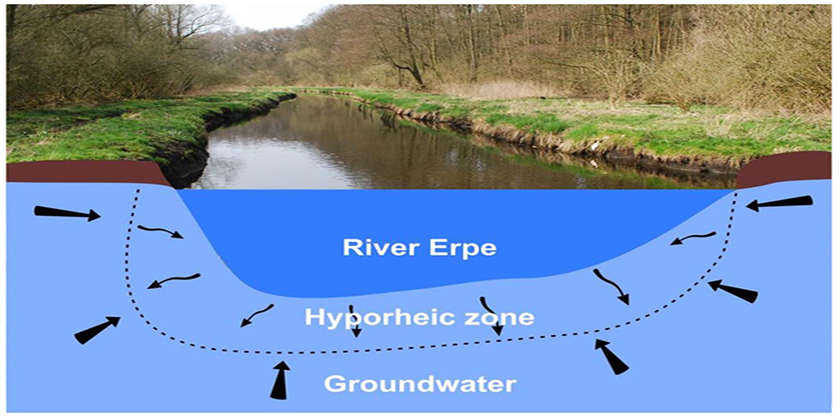Department Environmental Chemistry
HypoTRAIN

A contemporary view of rivers recognizes them as having multiple vertical and lateral flow paths serving as bidirectional links to the surrounding landscape. These links create water-saturated areas beneath the stream bed and within stream banks containing some proportion of channel water, so called ‘hyporheic’ zones. A hyporheic exchange flow can be described as river water that downwells into subsurface flow paths, travels for some distance beneath the stream bed or inside stream banks, eventually mixes with ground water and then returns to the river.
Recent studies have led to the hypothesis, that biotransformation in hyporheic zones can be a major removal pathway of organic pollutants, contributing significantly to the self-purification of natural waters. To test this hypothesis and fill significant knowledge gaps with respect to hyporheic processes, 16 PhD candidates from different disciplines investigate hyporheic zone-related topics in a Marie Curie Innovative Training Network (ITN) called HypoTRAIN - ‘Hyporheic Zone Processes – A training network for enhancing the understanding of complex physical, chemical and biological process interactions’.
In this PhD project, biotransformation of polar organic pollutants will be investigated along hyporheic subsurface flow paths, to which end a novel time-integrative low flow passive sampling device will be developed, validated and applied in river field studies. Biotransformation of parent compounds and the formation of transformation products will be investigated using target and suspect liquid chromatography high-resolution tandem mass spectrometry workflows. Enantioselective biodegradation serves as a complementary biotransformation indicator and will be traced using enantioselective separation.
